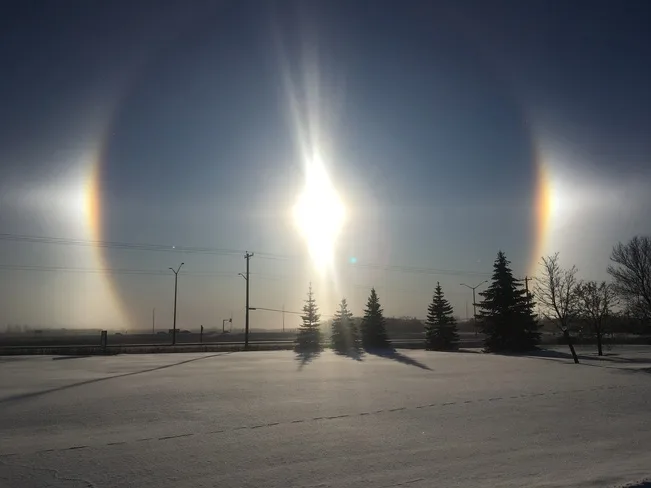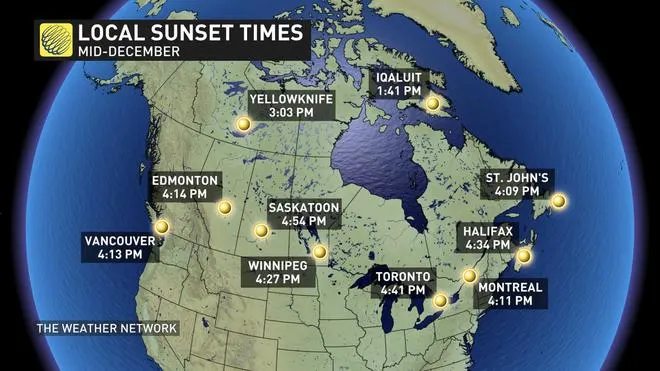
Why the earliest sunsets of the year come before winter solstice
Daylight is a precious commodity in Canada at this time of the year. Short days and long nights can leave many of us feeling sun-starved. So here's some good news: The earliest sunsets of the year are already behind us.
But, wait, isn't the winter solstice the shortest day of the year in the Northern Hemisphere?
Strange as it sounds, both facts are true.
Most of us know that winter solstice, which falls around December 21st each year, is the day with the shortest span of daylight. It marks the official start to winter (not to be confused with the beginning of meteorological winter) when the Northern Hemisphere receives the smallest amount of direct sunlight.
DON'T MISS: Bright 'evening star' Venus dazzles this winter in two planetary conjunctions
Earth's tilt means that it's not only the sunsets that have been getting earlier this fall, but the sunrises have also been getting later. Sunrises will keep creeping later until early January, even after the days start getting longer again. That's why the actual length of daylight we see each day will keep shrinking, even while sunsets get later.
So why don't the earliest sunsets coincide with the shortest day? It comes down to how we measure time.
MEAN SOLAR TIME VERSUS APPARENT SOLAR TIME
When we talk time, mean solar time is usually what we mean. It's the time we read on clocks, representing the average length of the one solar day -- 24 hours.
Apparent solar time measures the sun more directly, tracking the time it takes for the sun to return to the same point in the sky over a particular line of longitude. That's a more exact measurement, and it's one that varies slightly throughout the year, thanks to the shape of Earth's orbit and its tilt.
The slight difference between the two means that solar noon -- when the sun reaches its highest point in the sky each day -- doesn't always line up with 12:00 p.m. It shifts slightly earlier in the day leading up to the winter solstice. That means sunset, in turn, comes earlier in the day.

LONG NORTHERN NIGHTS
For areas north of the Arctic Circle, within 23.5 degrees of the North Pole, there are more than two months of the year when the sun NEVER rises above the horizon. Fairbanks, Alaska will still see a sunrise and sunset at this time of year, but a sunset as early as 2:39 p.m. AKST on the winter solstice leaves less than four hours of sunlight after a late sunrise at 10:58 a.m. AKST.
In 2019, many places across the north saw their last sunset of the decade in mid-November.
WATCH BELOW: WINTER HAS TWO STARTING DATES
With files from Weather Network meteorologist Kelly Sonnenburg.
Editor's note: This article was originally published in 2019.










